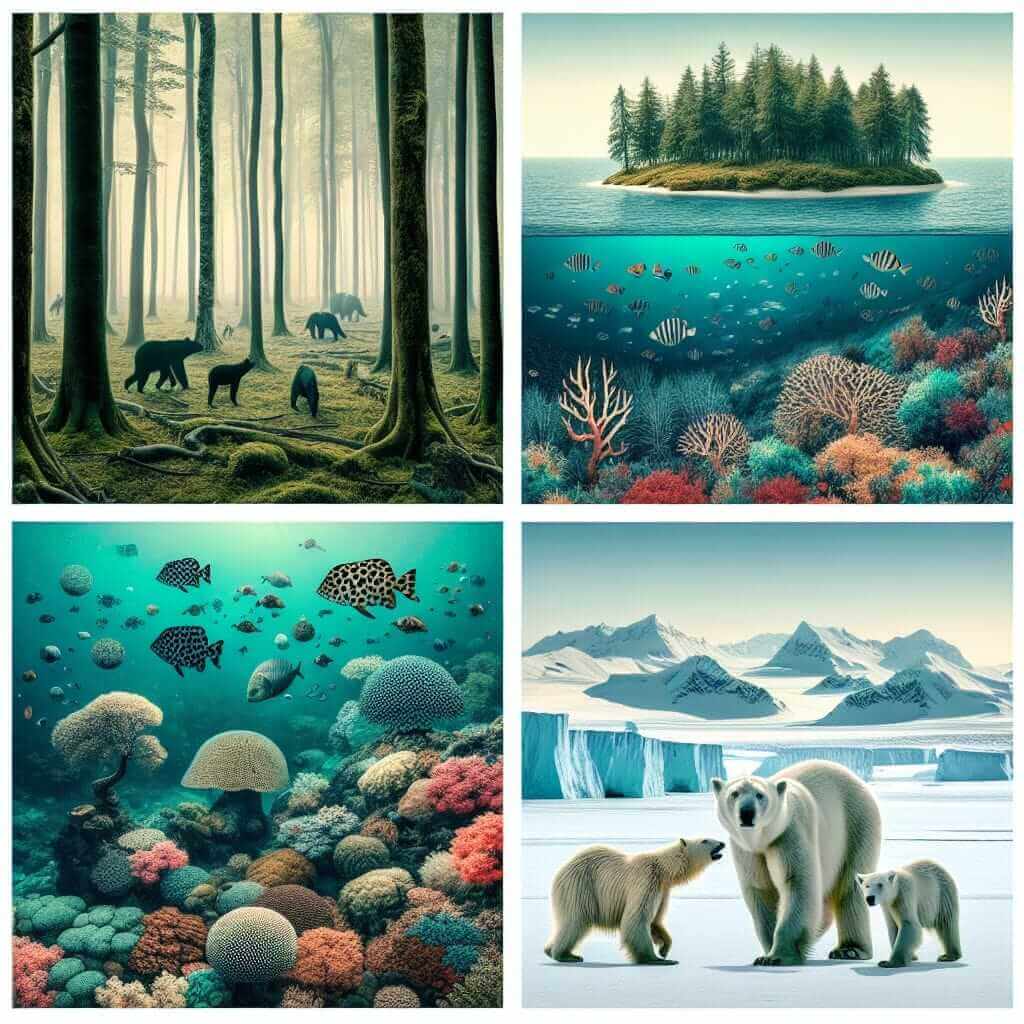The IELTS Reading section evaluates your ability to understand and interpret texts, often with academic or real-world relevance. One prominent topic often appearing in the IELTS Reading exams is the impact of climate change on global biodiversity. Given the growing urgency and relevance of climate-related issues, it’s likely this theme will continue to feature in future exams.
In this article, we’ll explore “What are the effects of climate change on global biodiversity?” We will provide a detailed reading passage suitable for IELTS practice, followed by comprehension questions, answers, and a discussion of common errors.
IELTS Reading Practice: Effects of Climate Change on Global Biodiversity
Reading Passage
Section: Medium Text
Climate change is an undeniable force reshaping ecosystems and altering the planet’s biodiversity. Higher global temperatures, changes in precipitation patterns, and more frequent extreme weather events are just a few manifestations of our shifting climate. These changes have profound effects on plant and animal life across the globe.
One significant impact is habitat loss. As temperatures rise, many species find their traditional homes become inhospitable. For instance, polar regions are experiencing ice melt at unprecedented rates, threatening species like the polar bear. Similarly, coral reefs are bleaching and dying due to warming oceans, impacting marine life reliant on these ecosystems.
Extreme weather events, such as hurricanes, wildfires, and droughts, are becoming more frequent and intense. These events can devastate habitats, leading to a decline in biodiversity. Wildfires, for instance, can decimate forest areas, killing countless animals and plants and leaving the land barren for extended periods.
Climate change also affects food chains and interaction patterns among species. Warmer temperatures and shifting seasons can disrupt the synchrony between predators and their prey. Migratory patterns of birds, for example, are changing, causing mismatches in timings that can result in food shortages and population declines.
Human activity exacerbates these challenges. Deforestation, urbanization, and pollution contribute to climate change while simultaneously reducing the planet’s capability to counteract these shifts. This dual impact not only accelerates the loss of biodiversity but also hampers the natural recovery processes.
In conclusion, climate change is a multifaceted threat to global biodiversity. Its effects stretch across various ecosystems, resulting in habitat loss, disrupted food chains, and increased frequency of extreme weather events. Addressing this issue requires global cooperation and immediate action to mitigate further damage and support recovery efforts.
_ Climate Change and Biodiversity_
Climate Change and Biodiversity_
Comprehension Questions
-
Which of the following is a direct consequence of higher global temperatures?
- A. Increased urbanization
- B. Habitat loss
- C. Economic growth
- D. Improved agricultural output
-
Polar bears are particularly threatened by climate change because:
- A. They are losing their traditional hunting grounds.
- B. They are new predators in their habitats.
- C. They are affected by deforestation.
- D. They depend on coral reefs.
-
True/False/Not Given: The reading passage states that human activity exacerbates the impact of natural recovery processes.
-
How do extreme weather events contribute to the decline in biodiversity, according to the passage?
-
Match the following consequences of climate change to their respective impacts described in the passage:
- Habitat loss
- Extreme weather events
- Disrupted food chains
Answer Keys
- B. Habitat loss – The passage mentions that many species find their traditional homes become inhospitable due to higher global temperatures.
- A. They are losing their traditional hunting grounds. – The passage explains that polar regions are experiencing ice melt, threatening species like the polar bear.
- True – The passage clearly states that human activity exacerbates the challenges and reduces the planet’s capability to counteract climate change.
- Extreme weather events can devastate habitats, leading to a decline in biodiversity. Wildfires, for example, can decimate forest areas, killing countless animals and plants and leaving the land barren for extended periods.
-
- Habitat loss -> Polar regions experiencing ice melt.
- Extreme weather events -> Hurricanes, wildfires, and droughts.
- Disrupted food chains -> Warmer temperatures and shifting seasons causing mismatches in timings.
Lessons Learned
Students often misinterpret questions related to cause and effect. They should pay close attention to how climate changes directly impact natural habitats and not confuse them with indirect human activities.
Vocabulary
- Inhospitable (adj) /ɪnˌhɒsˈpɪt.ə.bəl/: Unwelcoming or difficult to live in.
- Bleaching (n) /ˈbliː.tʃɪŋ/: The process in which corals lose their color and vitality.
- Synchrony (n) /ˈsɪŋ.krə.ni/: Simultaneity in activity or occurrence.
Grammar Focus
Relative Clauses
Relative clauses provide additional information about a noun.
- Example: “Many species find their traditional homes become inhospitable as temperatures rise.”
- Explanation: “as temperatures rise” is a relative clause describing the situation.
Tips for High Scores in IELTS Reading
To excel in the reading section, practice regularly with varied materials on current topics like climate change. Focus on understanding the passage context, developing strategies to identify keywords, and managing time effectively. Make sure to review and learn from errors to avoid repeating them in the actual test.
By following this structured approach, you’ll be better prepared for how climate-related issues could appear in the IELTS Reading exam, ensuring a well-rounded preparation and higher chances of achieving a top score. Links to more relevant articles What are the effects of climate change on biodiversity?, How is climate change affecting global biodiversity?, What are the effects of deforestation on global biodiversity?.


